In October 2019, Distant Era released our third series (preceded by Urban Fantasy and Portraits from a Distant Era). Titled Hauntings from a Distant Era, this series expanded on the moody fantastical portraiture begun in the preceding series and expanded upon it with some scenic, environmental pieces, as well as some digital compositing. Each portrait also included a caption, a little story fragment of glimpse into its world.
Hauntings was an attempt to make a series of spooky images around Halloween and to cut loose from the static style of the portraits in the previous series. It represents a time of pushing boundaries and free experimentation. Portraits from a Distant Era had felt like a success because of the specificity of its lighting, mood, and tone; we alternated between two key lights in that series (a softbox and a gridded beauty dish), shot that entire series in portrait orientation, and kept edits fairly restrained and consistent. Hauntings from a Distant Era went far afield, on the other hand, introducing gels, alternate lighting sources, shutter drag, compositing, and even a moving image rendered as a gif.
Like any experiment, the work improves the more practiced one becomes, and the initial play of experimentation someday becomes artwork with enough practice. This was a series about trying new techniques, which informed much of what we’d do in later series. Take a look at this earlier work from 2019 this Halloween. May it transport you to some strange and haunting place, witches’ warts and all.
The Cursed Portrait
I confess that even though death separated him from the world, a terror lingered concerning my former suitor, Mr. B––, former master of Hawthorne House at the top of the Grimshaw Hill. In the darkest nights, from the old daguerrotype near the cold spot beside the mantel, I swear he watches me still.
From the journal of Lin Hill, 1899
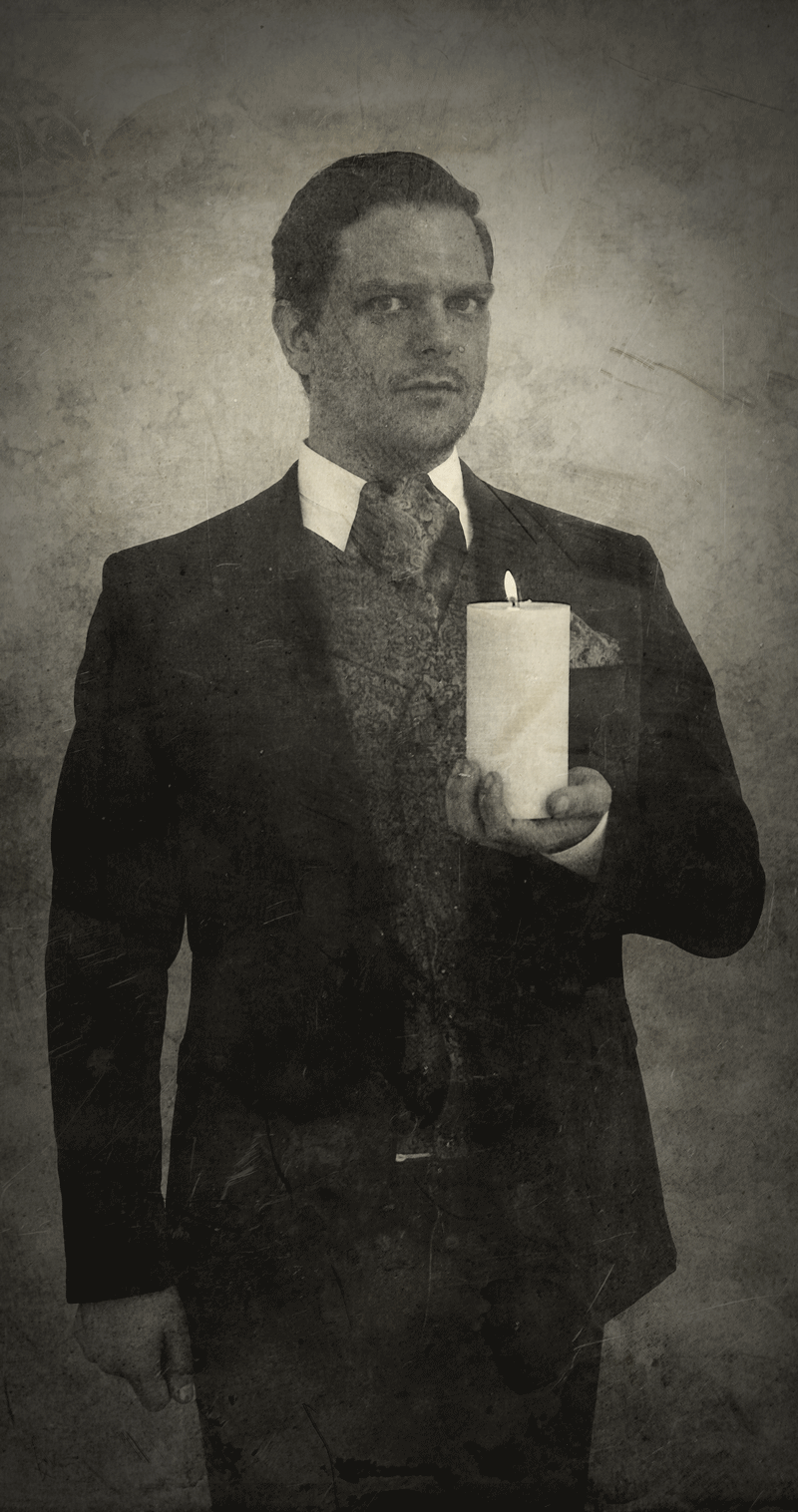
I call “Contemporary Gary” Henderson Distant Era’s A+ student because in two series he’s been the first subject photographed, he shows up fully prepared, puts a great deal of thought into his work, and in this instance he and Scott Longpre stuck around to help hold lights on “The Seance” portrait. Distant Era frequent flyers will recognize Gary as “The Changeling,” the first portrait in The People of Light and Shadow series.
“The Cursed Portrait” was an experiment in creating a photograph with moving parts and an experiment in creating a daguerreotype-style photograph; the latter style we’d revisit for 2022’s Auxientia steampunk event, as well as (somewhat) Birch House Immersive’s company portraits.
As for the motion part of it, that was created by taking video and masking in Photoshop. I intended to do more of these for the series but (as I recall) had a hard time sharing them with motion at the time, so this was the only one.
The Black Widow
On the charred, disintegrating wood of the abandoned house the Black Widow’s portrait remains; the fire that lapped the rugs and licked the walls and devoured the garrett and attic and gorged itself on the flesh and bones of the family declined a single taste of the widow’s portrait. To this day it hangs from the sooty skeleton of the house—just as, long ago, the widow herself was hung following the witchcraft trial whereupon she swore her vengeance.
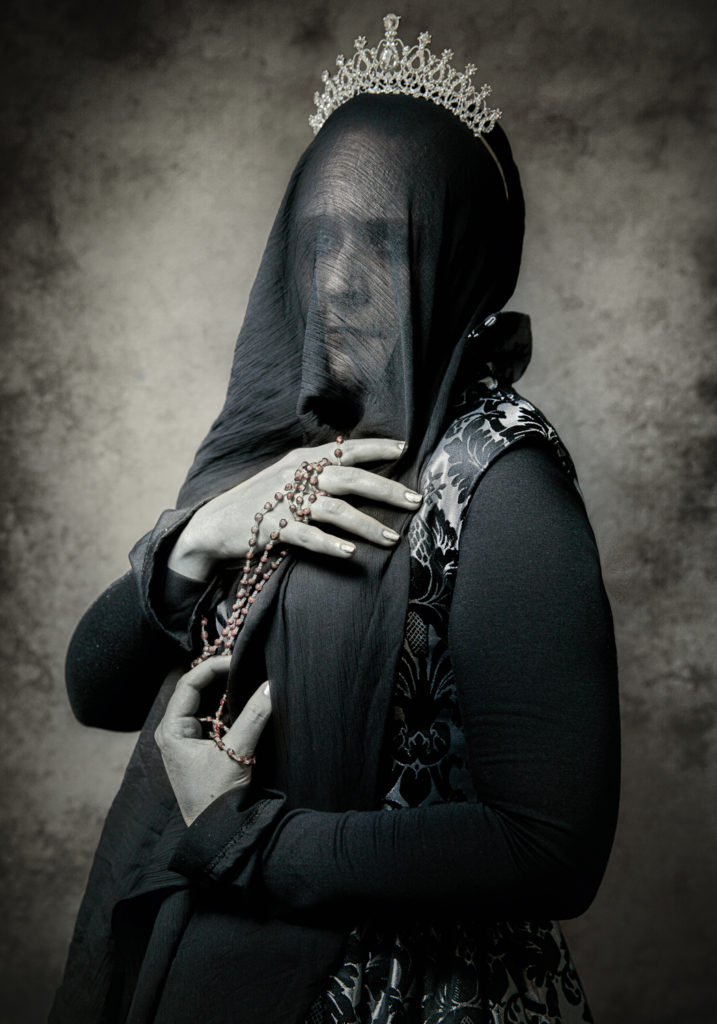
“The Black Widow,” portrait 2 in Hauntings from a Distant Era, was pulled from our second series, Portraits from a Distant Era, where it was titled “The Banshee.” A conversation with Birch House Immersive’s Lauren Fields will inevitably produce the phrase “a liminal space,” and that’s the space this portrait occupies in the two series—it differs from the rest of the Portraits from a Distant Era series in the way it’s edited, and its subject material belongs more in the Hauntings series, whereas the photography and lighting styles certainly belong with the former series. The two series were shot within a month of one another.
The Seance
Aided by the medium, the women combined their voices and called to the spirit that haunted the outer darkness. “Who goes there?” the women whispered. And the medium’s voice was not her own voice, and the medium’s eyes were not her own eyes, and the medium’s body was not her own body as the possessing spirit manifested and bore her aloft.
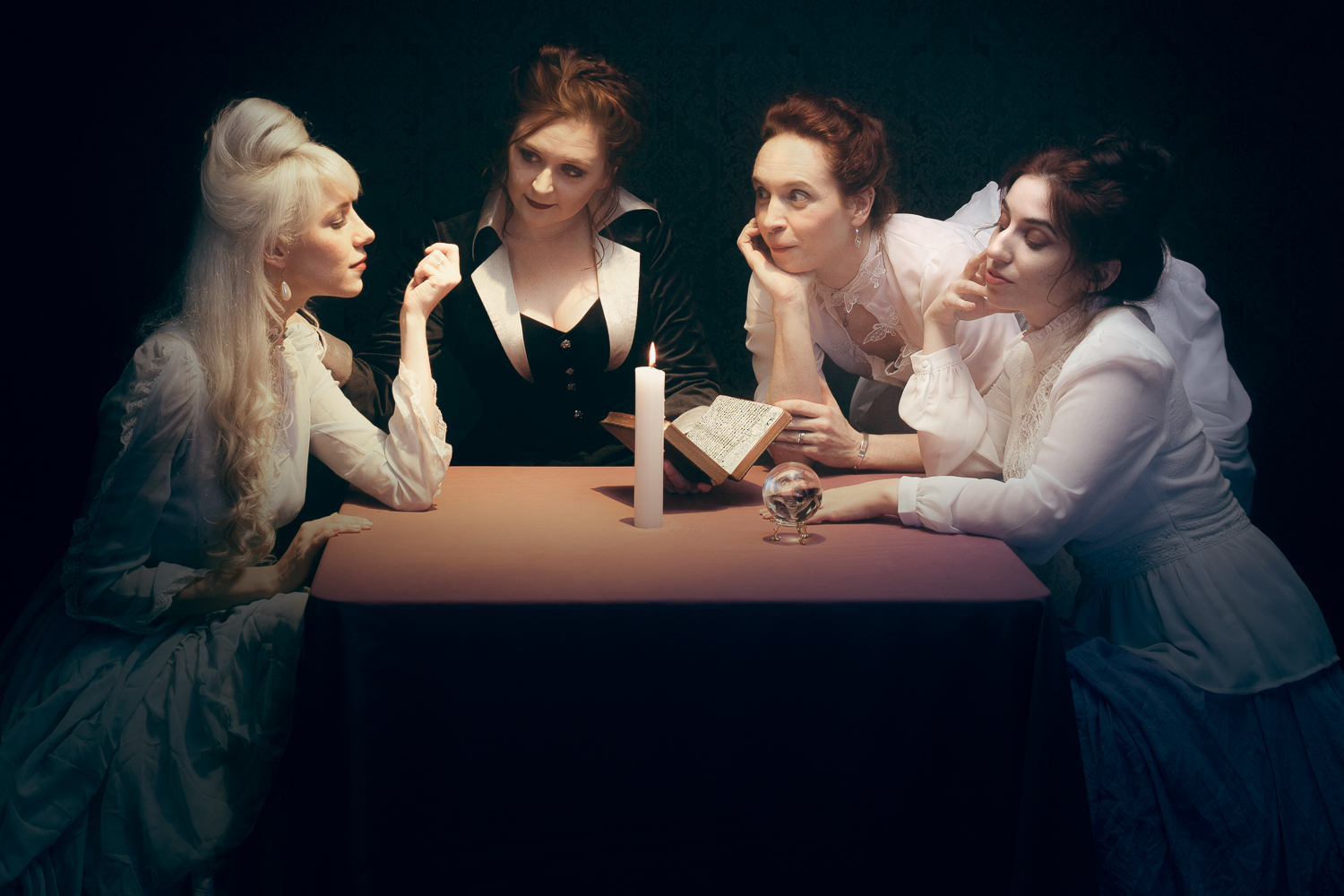
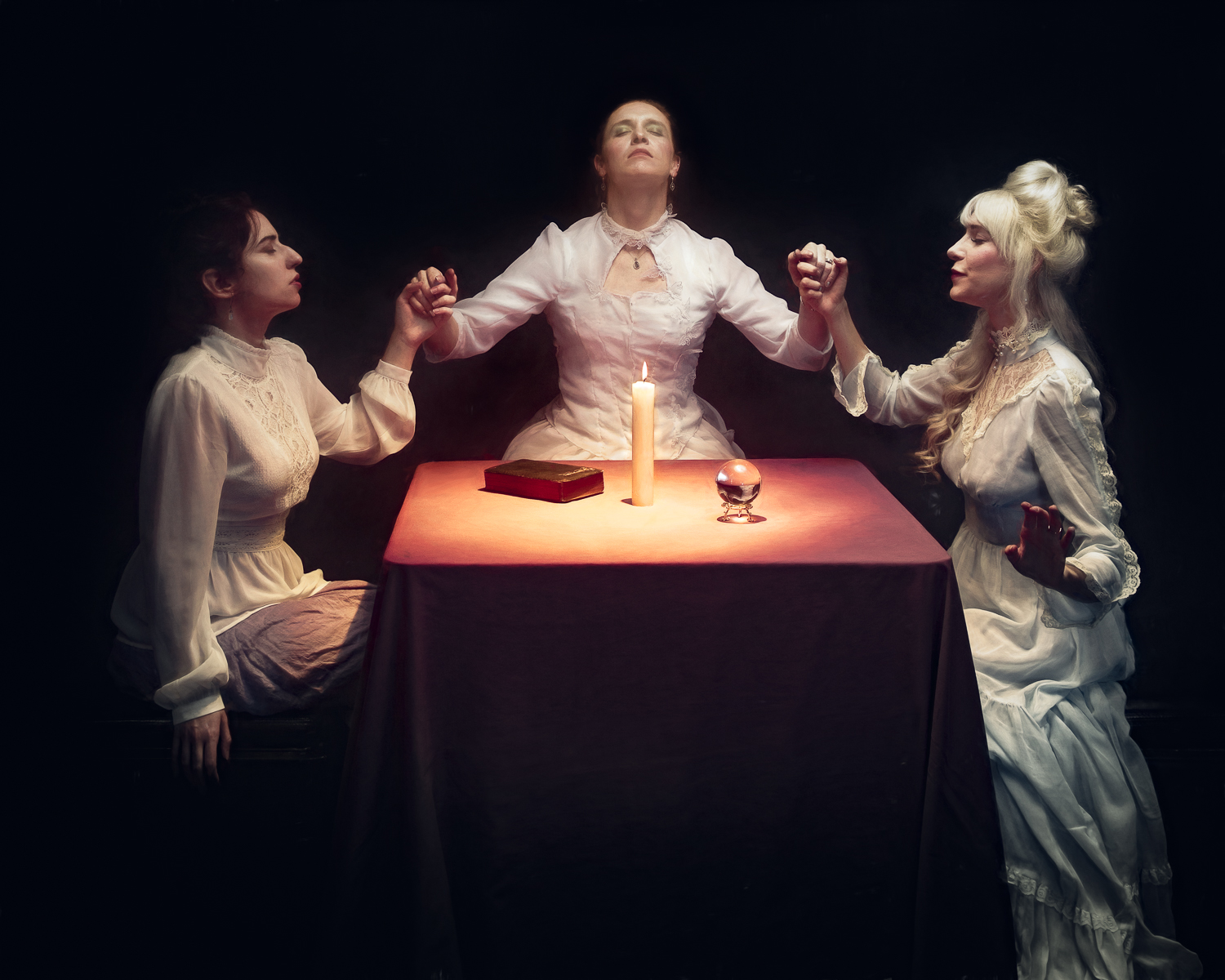
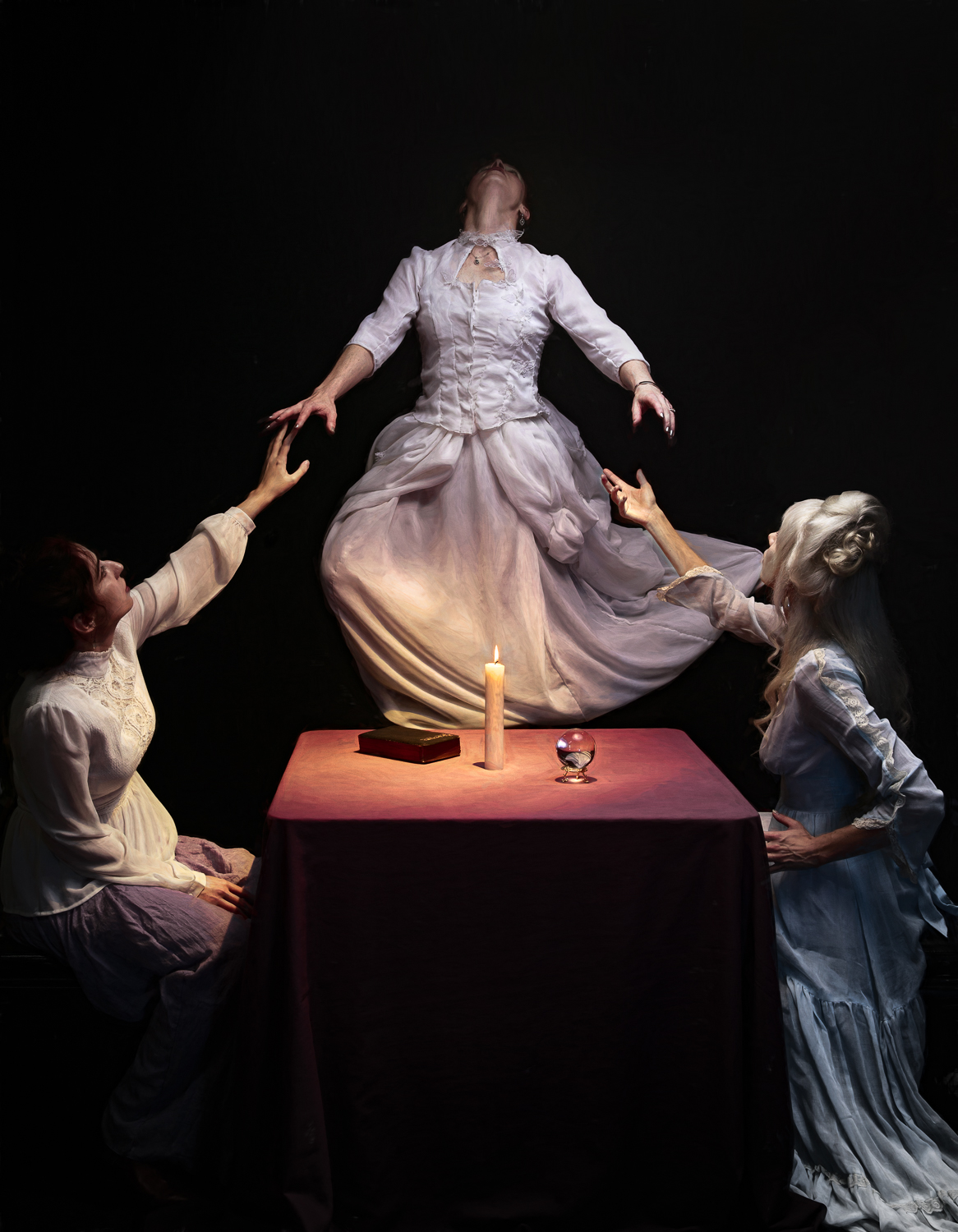
“The Seance” was an experiment in creating a scenic portrait that showed action, a sequence of moments in a story, and it was also an experiment in trying a levitation picture. The first image wasn’t part of the narrative and was edited years later; eagle-eyed viewers will notice Scott Longpre trapped in the crystal ball and the text of the Egyptian Book of the Dead in the medium’s journal.
The Tormented
Day or night, Mr. Spurlock found no rest; awake and asleep the phantoms hounded him, whispered and howled—condemning him for the bloody deed he had done, urging him to do it again, again, again.
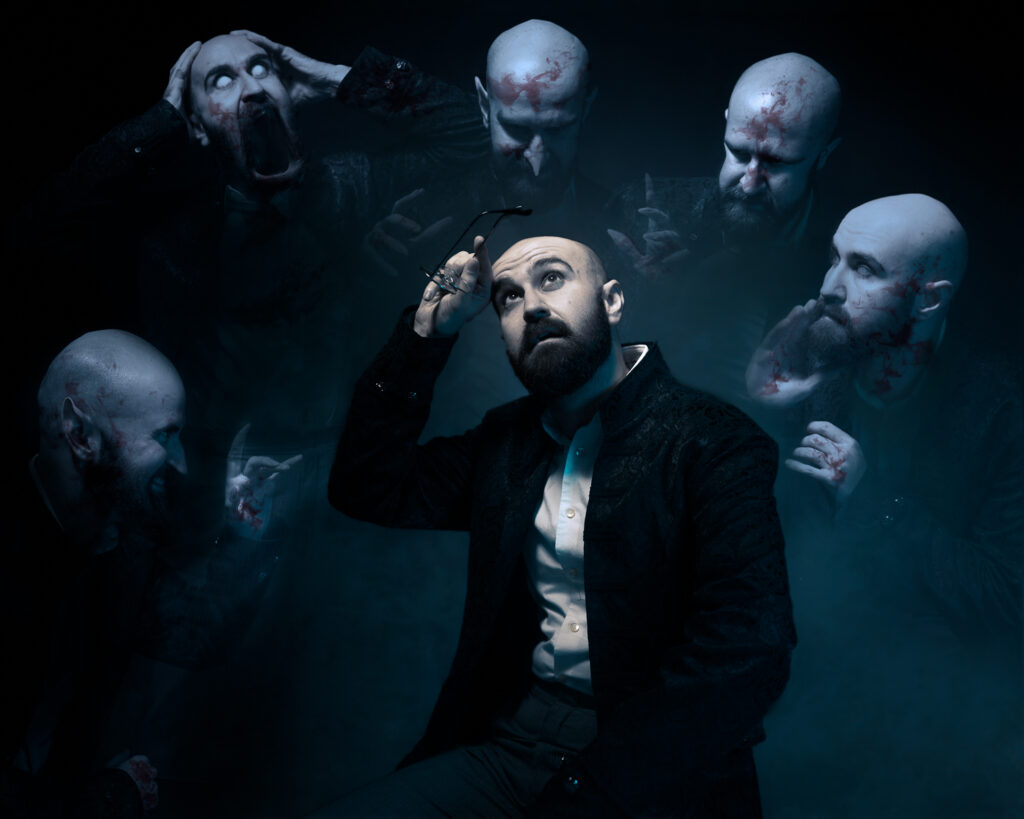
“The Tormented” was an experiment in compositing. It sure was fun to direct. We photographed Scott in various positions and poses, tormenting himself. Editing the work, I had a great time exaggerating the features of his tormentors, giving them more demonic eyes, noses, ears, and hands. Scott did such a great job acting through these poses.
The Possessed
The demon that possessed Mrs. Bainbridge finished by eating the children. They played hide-and-seek until it caught them one by one; and then it smiled so very, very wide. And those it could not devour in a single sitting, it stocked in the freezer next to the lean leftovers from their parents and their deliciously well-marbled household servants.
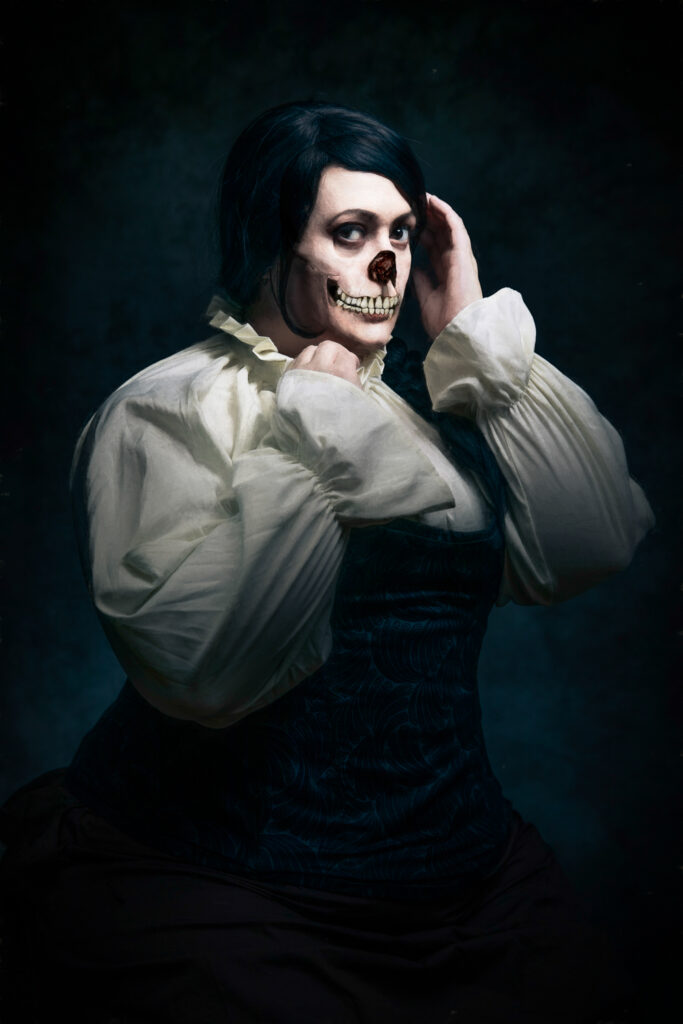
Portrait 5, “The Possessed,” was an experiment in blending and compositing features onto a subject, which we tied together with some painterly editing. I’ve always dug the nightmarish look Sara and I created in this one. It’s one of the first portraits I think of when I think of this series. “The Possessed” was my first try compositing a skull into a subject’s face; I’d spend a lot more time on such things 2022 with “The Hidden One, Hel,” in The People of Light and Shadow. Sara Robinson also appeared in Portraits from a Distant Era as “The Demon Queen.“
The Witch
The enchantress materialized from the midnight fog, the silver moon a crescent on her brow. Her crow-black eyes held in thrall each living thing she looked upon: men fell at her feet; women wept as she passed by; babes squalled; dogs whimpered and turned around in circles. Only the cats remained unmoved; a silent shadow of gleaming eyes, they followed the light of her candle as she made her way through the sepulchral labyrinth of the night.
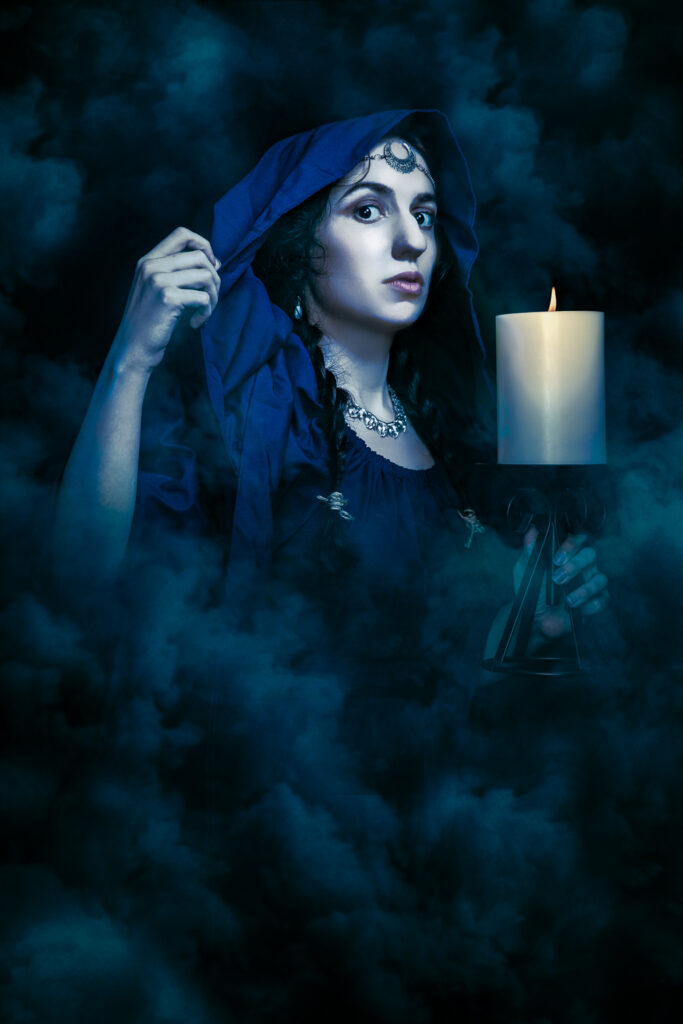
“The Witch” came together in the editing. Actor Juliana Brecher had such a wonderful pose and expression, by my initial lighting and color temperature weren’t working for the spooky aesthetic of the series. But we added in some smoke from images of “The Devil in the Midnight City” from our Urban Fantasy series, played with the colors, and voila! We had “The Witch.”
The Ghost Bride
Night after night she waits in the moonlight, pale as they day she was buried, the same day she was to be married. But the bridegroom tarried; her heart fell apart; not to hear ‘till death do us part’; and so yonder her ghost waits in the dark.
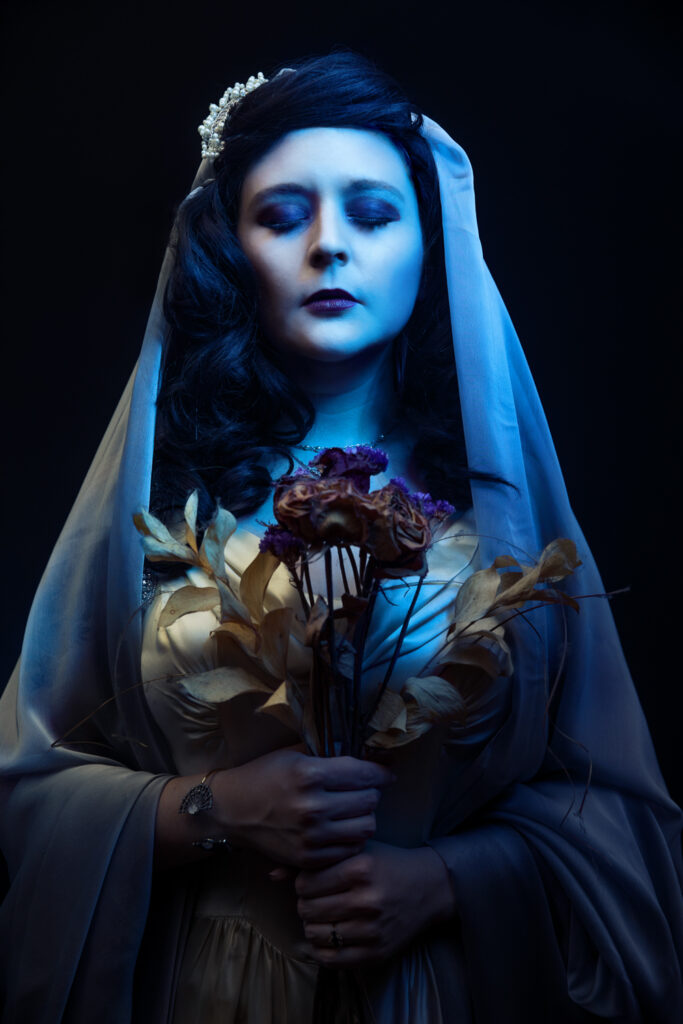
I’d enlisted Lauren Fields in Hauntings from a Distant Era before deciding that “The Black Window”/”The Banshee would be part of it. (Is it part of this series or the previous one? I still don’t know. It’s a mystery. I digress.) Her initial idea was Chicago haunt Resurrection Mary, and we planned to travel to the site of the haunting and shoot it there. There would be a car and Resurrection Mary in the headlights, and… wait, how were we going to light that? And when could we schedule a time to make it happen on a day when we had other subjects in studio? And how would it be edited to be consistent with the series? And… At a certain point I realized I just didn’t know how to shoot it back then, so we shot it in studio and I edited it on Trick-or-Treat night, 2019 (memorable because my computer crashed and I had to redo it). Along with the aforementioned Urban Fantasy and Portraits from a Distant Era series and Birch House Immersive portraits, Lauren appeared as “The Merrow” in The People of Light and Shadow.
The Haunted Princess
Four times in her life the princess had died and four times escaped Death’s earthen prison. But on snake-silent nights in the lonely watch of winter, the four mad ghosts of her four bitter deaths howled for her in the darkness, screaming her name—shrieking, crying, calling her back to the grave.
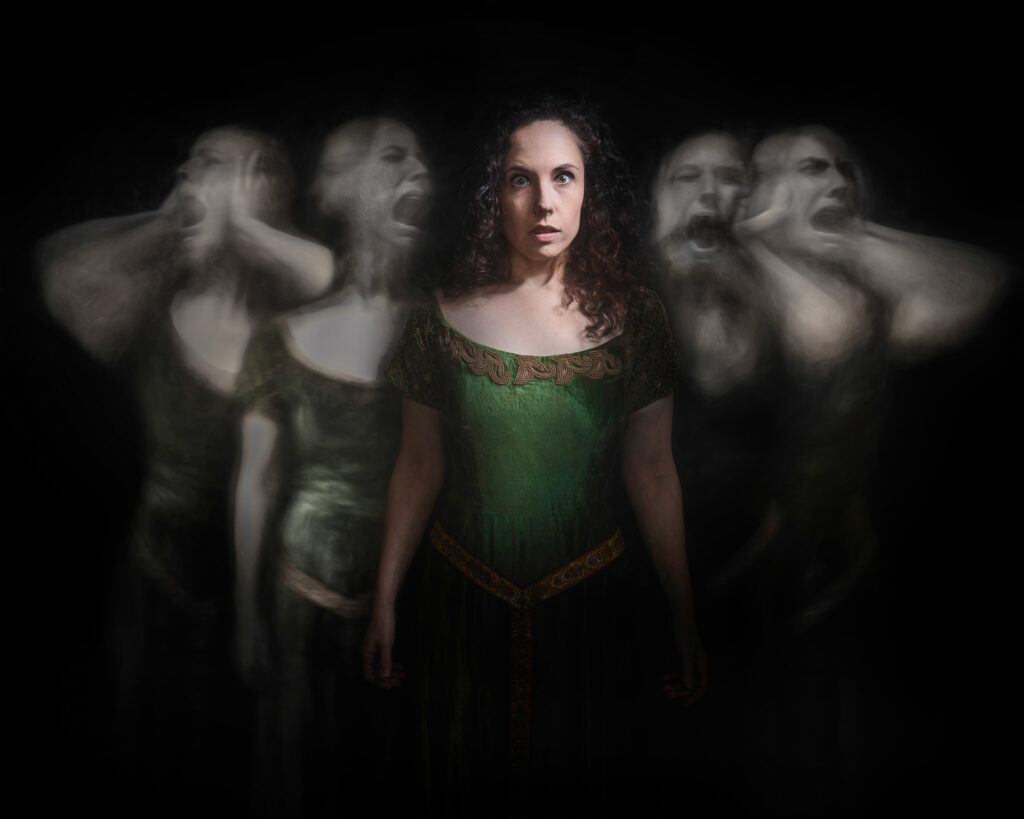
“The Haunted Princess” was an experiment in both compositing and slow shutter speed. Actor and intimacy designer Sarah Scanlon came up with the concept of a medieval princess in a haunted castle, but there were other layers to this too—the idea of voices in our heads. We created some truly haunting images, which we shot with a slow shutter speed, and which were released for the first time in October 2021 on The All Worlds Traveller under an entry called “Ghosts” (please check it out). Though initially shot to be part of “The Haunted Princess” portrait, the ghost images stand on their own as haunting Halloween photographs.
The Woman in White
When the tide of fog arises from the river and breaches the banks of the old city, the White Woman walks. She glides by night through quiet gardens, a string of pearls in her hand; she lingers in doorways, knocks three times, and hums a tune that no one can hear. The fools that follow the White Woman into the fog return again at low tide, their quiet corpses pale, swollen, and drowned—a single white pearl enveloped within the soft oysters of their mouths.
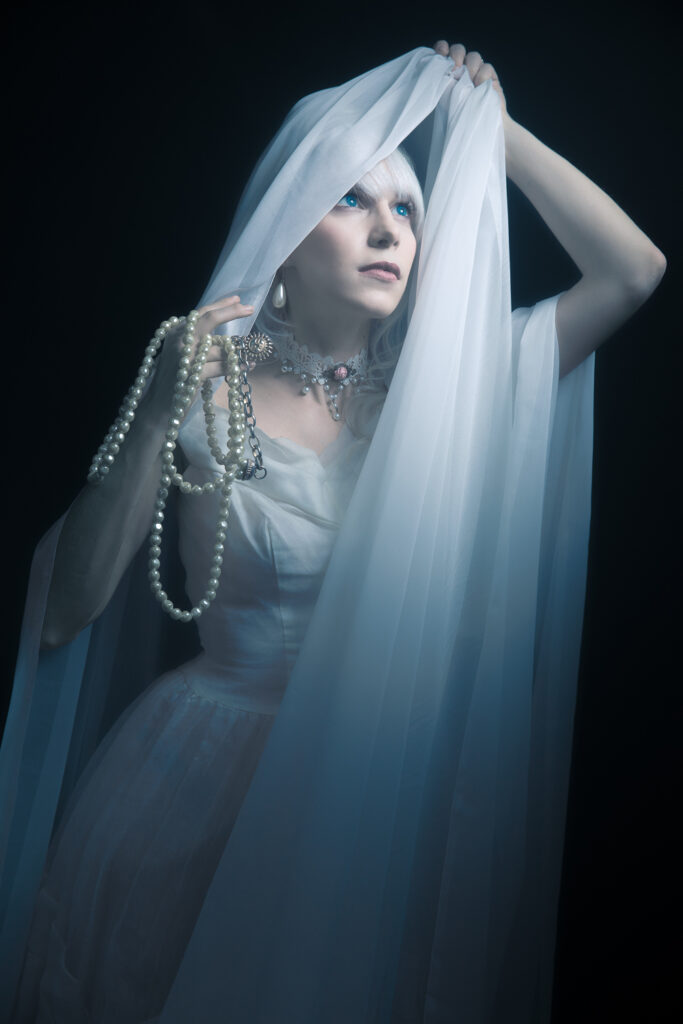
If we made a beauty image for the series, this was the one. I have always loved the soft, neutral tones of this portrait and the soft pinks and light blues that complement one another very simply. Mary-Kate is a skilled model with a wealth of ideas, and sessions with her are effortless. She appeared in The People of Light and Shadow as “The Vila.”
The Headless Haunt
The pluck and twang of a solitary banjo resounded through the lonely Appalachian wood at dusk—closer, closer, and closer—until the sun had set but the woods still glowed like dying embers. Faster and faster the bluegrass pursued, until lo! The banjo ceased and a ghoulish apparition manifested in the middle of the trail; cackling, the demonic ghost lifted its blazing head from its shoulders and hoisted it aloft.
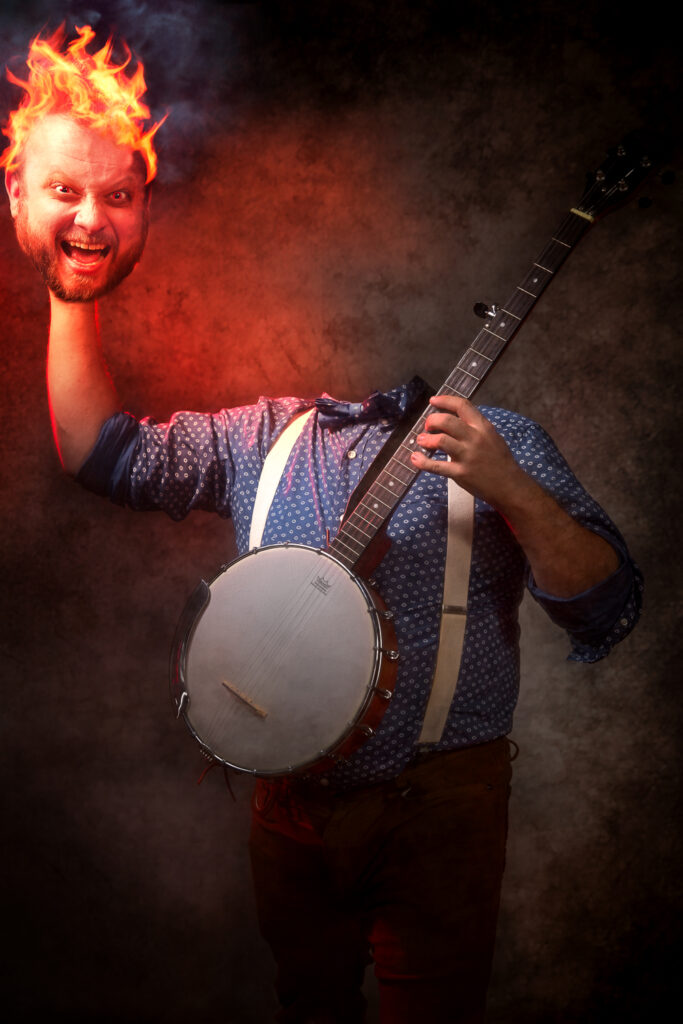
About once per year, photographer Greg Inda drives to the Carolinas to build banjos. Thus came about the notion to do a headless banjo player hurling his head, with hair of flame. This was an experiment in using gels and a little minor compositing (we took two photographs against the background, one with Greg standing in the center, the other with him standing on a stepladder).
The Medium
The medium beckons. Beyond her candle’s glow, the spirits of the dead crowd the darkness. Their voices are brittle leaves. Their sadness is the echo of a raindrop falling down a deep well. Their substance is wind and cobweb, sorrow and memory. The year declines; falling leaves and raindrops turn to snow. “Come.” The medium beckons. “Listen to their elegy.”
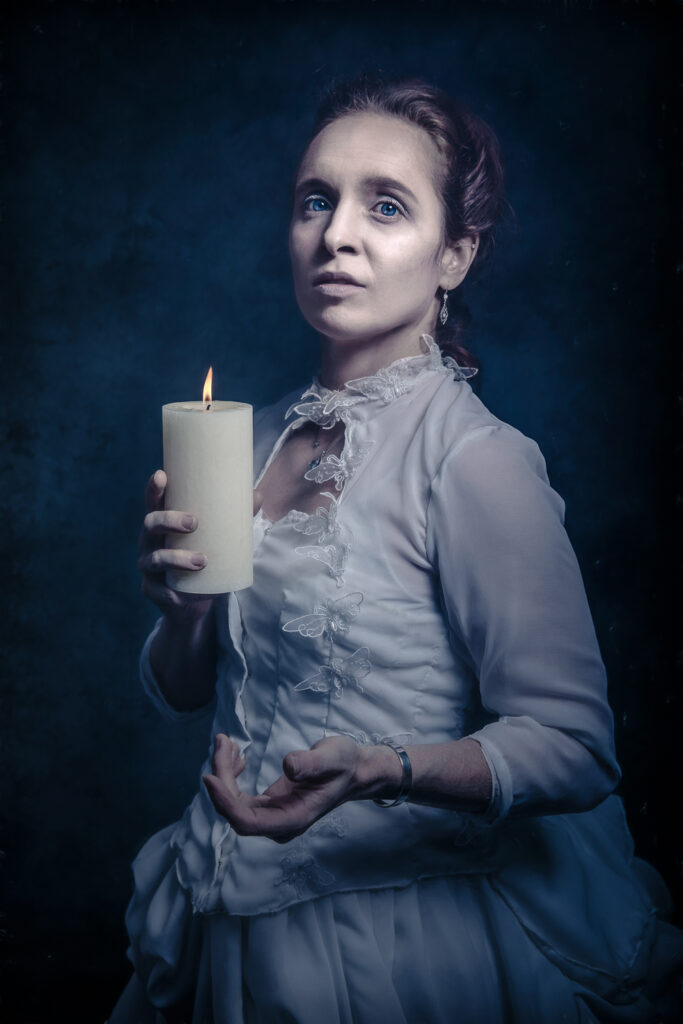
The medium from “The Seance” needed a portrait all her own, and so here we have Distant Era MVP Elizabeth MacDougald, who has appeared in, and assisted with, all the major Distant Era series, including Urban Fantasy, Portraits from a Distant Era, Hauntings from a Distant Era, A Distant Era: Chicago, November 2019, and The People of Light and Shadow. We even made a motion one of this portrait, but I never completed it and turned it into a gif. Maybe someday when I have unlimited time. Also, this tends to be the image I think of when I think of this series. I like the way the medium seems to invite you in, the haunting look on her face. Is she ghost or mortal?
Midnight Farewell
With twelve obsequious bellows the bell tolled the time. “Farewell and farewell,” breathed the master of Hawthorne House above a panting flame. “Strange things you have seen in this place, and stranger things may be: In the dark, all nightmares, all phantoms, all murderous dreams and frenzies of the brain take shape from imagination. Farewell.” And the master grinned like a jack-o-lantern and shut the groaning doors of that jumbled and treacherous old house and left us to the dark and to the haunted thoughts that darkness breeds.
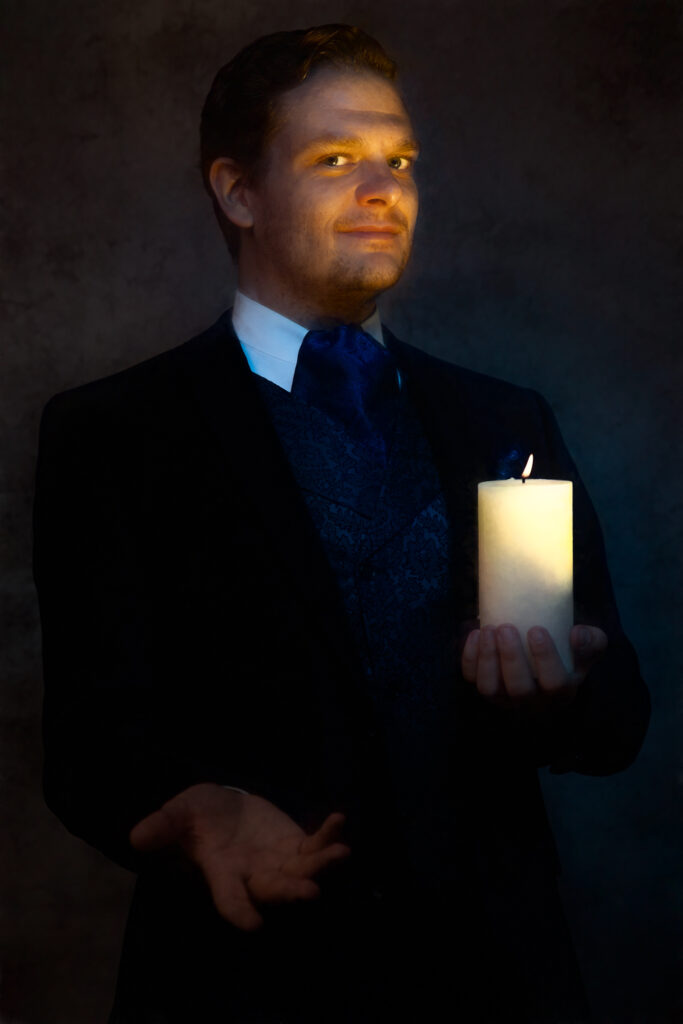
“Midnight Farewell” appeared as the twelfth portrait in the series, but the thirteenth with “The Black Widow” included. Either way works. In truth, my inability to share Gary Henderson’s first portrait in motion at the time prompted me to edit another one from the session so that he’d have a color one consistent with the others in the series. It was a nice bookend to the series, a greeting and a farewell, an invocation and a benediction. In the composite of the whole series that is the featured image for this post, he’s at the bottom beckoning you to take hands and come into the spirit world.
Happy Halloween
And there it is, Distant Era’s third series, Hauntings from a Distant Era.
I haven’t reposted Hauntings from a Distant Era since 2019 because as I’ve learned and grown, I’ve seen where 2019’s experiments could be improved and refined, and I’ve wanted to revisit these images and fix and freshen them with the experience and perspective of a few years. Alas, there has always been a more pressing project that needed to be completed now rather than pull out and reexamine older work. Someday, though, I’d like to take another look at them and see what may be done. For now, I’ll enjoy them for the bold experiments they were at the time.
May they bring you some spooky vibes this Halloween!

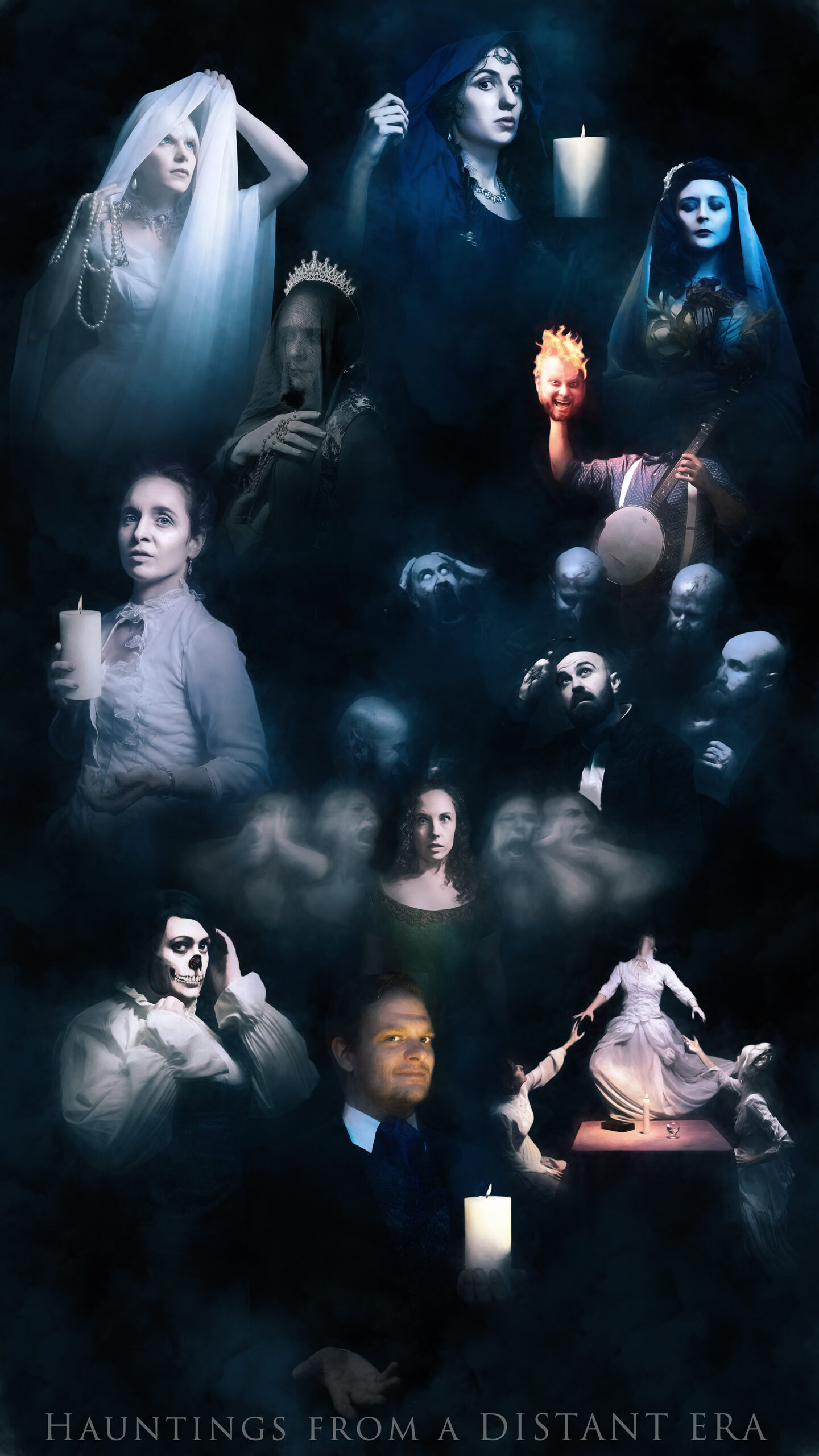
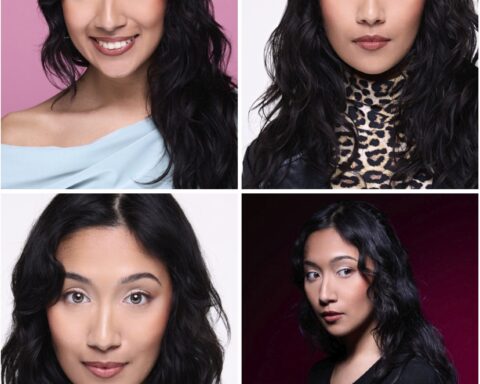
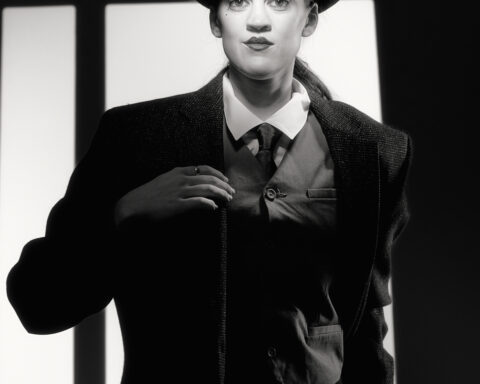
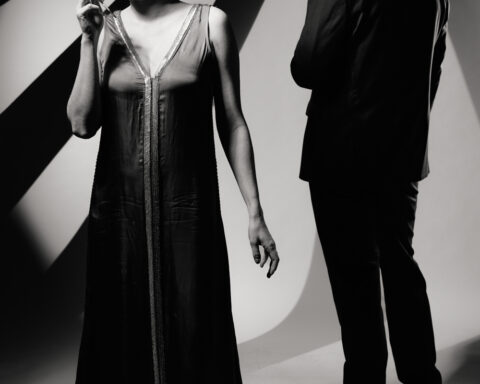
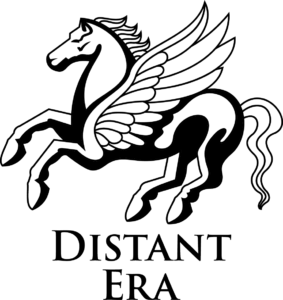
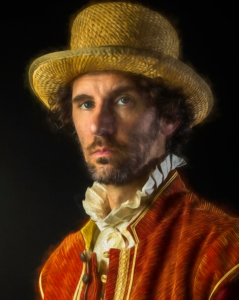
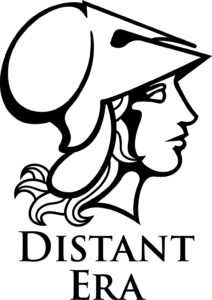
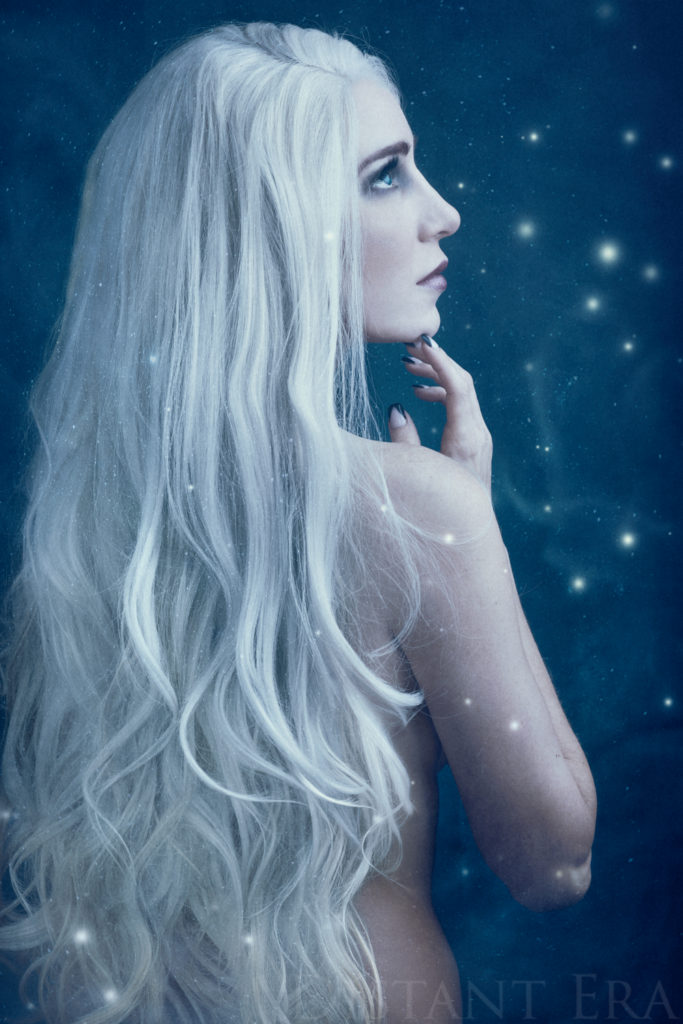
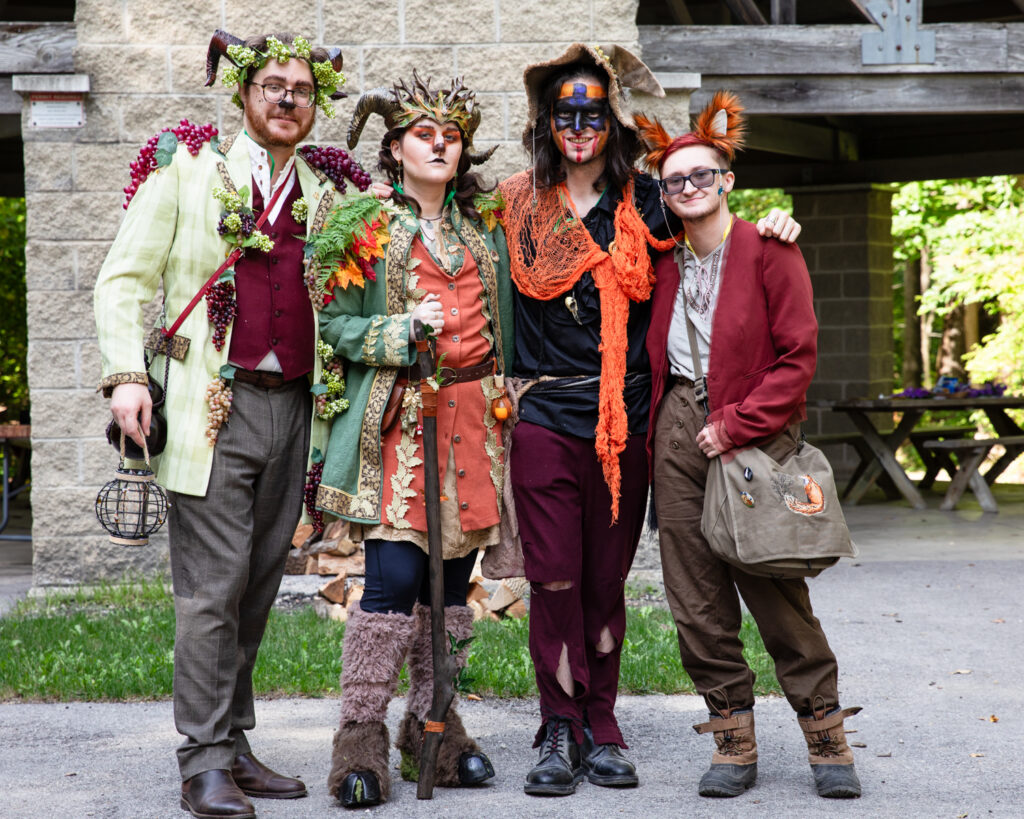
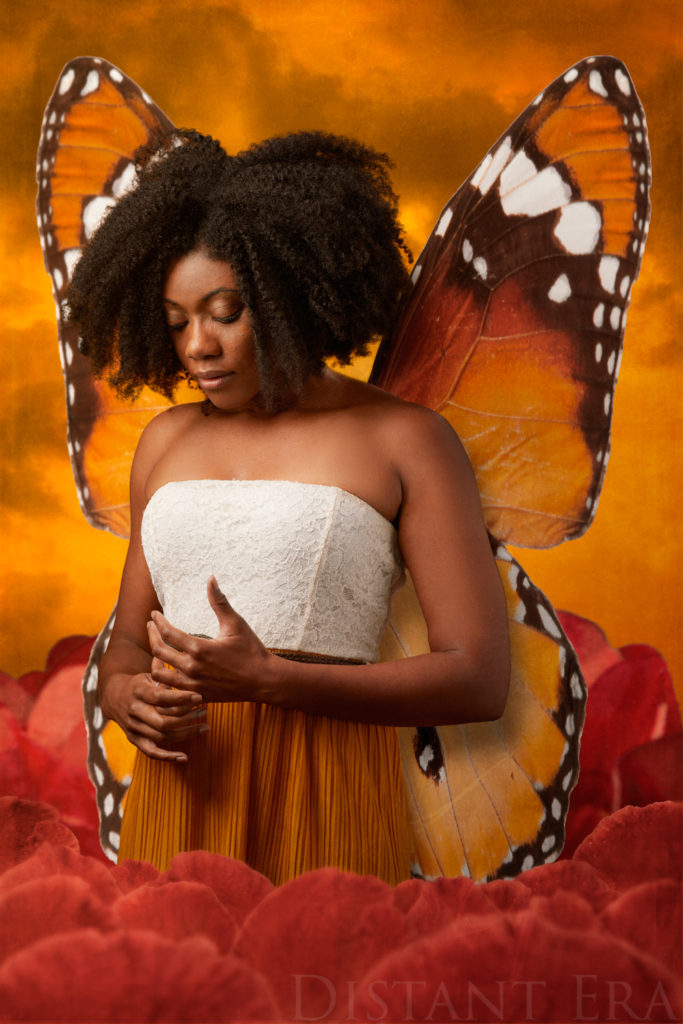
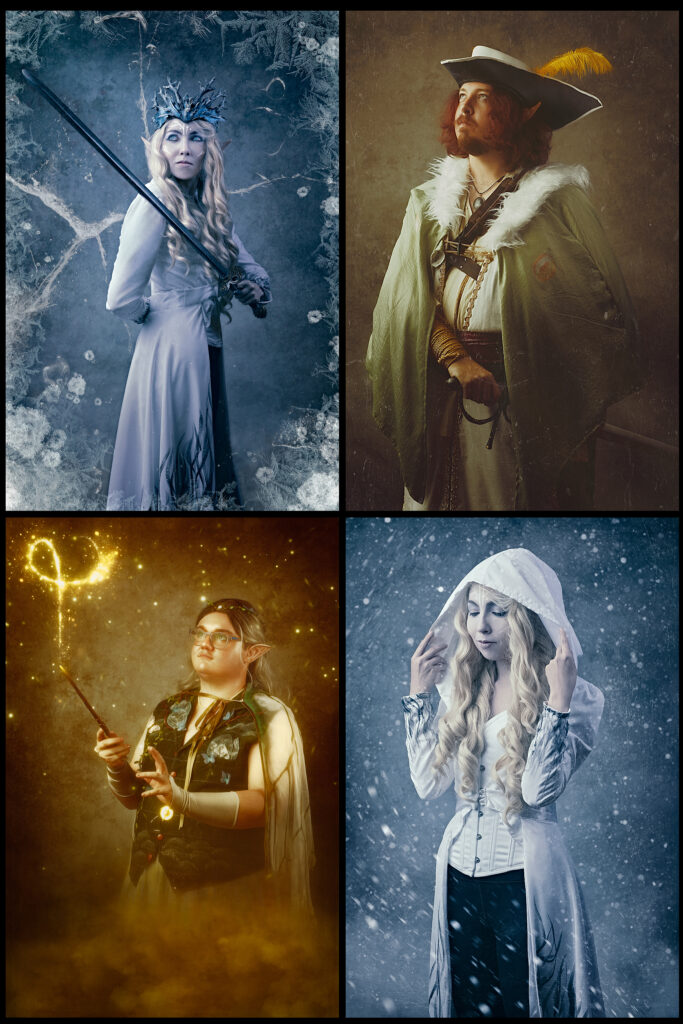
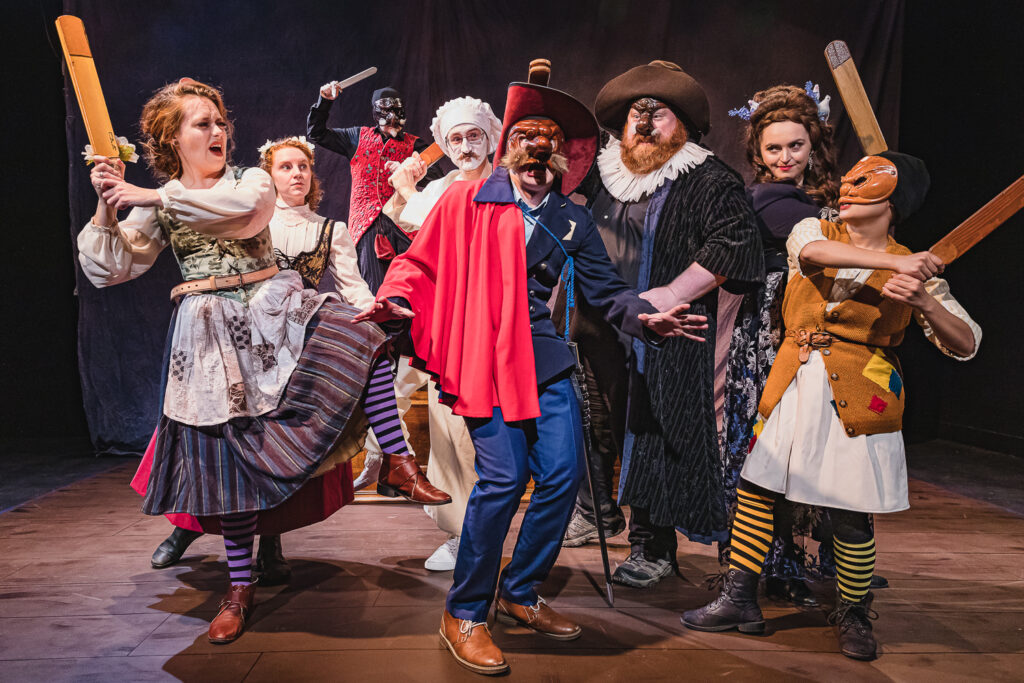
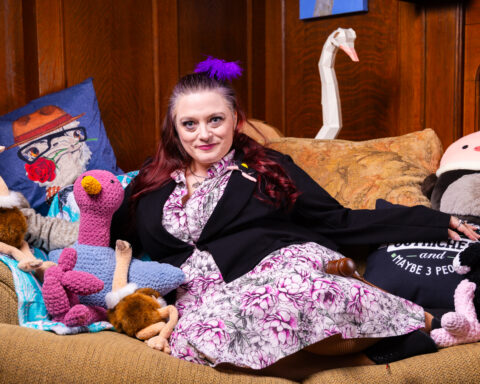


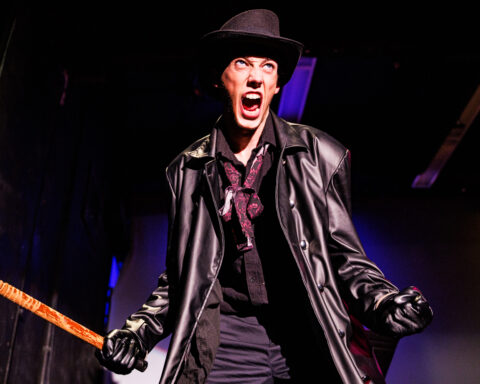
Follow Me